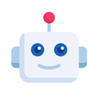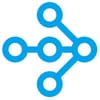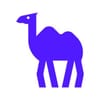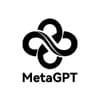
Vertex AI
Google's enterprise AI platform evolved from internal tools to become a comprehensive solution, combining ML expertise with cloud architecture to democratize AI development while maintaining enterprise-grade security.

Google's enterprise AI platform evolved from internal tools to become a comprehensive solution, combining ML expertise with cloud architecture to democratize AI development while maintaining enterprise-grade security.

Code Interpreter started as an experimental feature but evolved into a powerful tool for automated code execution and generation. Its journey represents the growing capability of AI systems to understand and generate executable code.

TaskWeaver arose from Microsoft's insights into how complex tasks could be broken down and automated. Its evolution demonstrates the growing sophistication in how we approach task decomposition and automation in AI systems.

Ray's journey from a distributed computing framework to a crucial piece of AI infrastructure mirrors the evolution of AI system requirements. Its development showcases how computational demands have shaped the modern AI development landscape.

Weights & Biases began as a tool for machine learning experiment tracking but evolved into a crucial platform for AI development. Its growth reflects the increasing importance of observability and reproducibility in AI systems development.

LangFlow emerged as an answer to the growing complexity of LangChain applications. What started as a simple visualization tool has evolved into a comprehensive visual programming environment, making AI development more accessible to a broader audience.

NARS represents a unique approach to AI reasoning, emerging from the need for systems that can learn and adapt with limited resources. Its development challenges traditional assumptions about AI systems and knowledge representation.

OpenCog emerged from the ambitious goal of creating artificial general intelligence. Its development history reflects the complex challenge of building systems that can think and reason across multiple domains.

ACT-R began as a theory of human cognition but evolved into a comprehensive framework for modeling cognitive processes. Its development reflects the ongoing dialogue between cognitive science and artificial intelligence.

PGVector arose from the need to integrate vector search capabilities into traditional database systems. Its evolution reflects the growing convergence of conventional databases with AI-focused data structures and search capabilities.

ChromaDB emerged as a lightweight alternative in the vector database space, focusing on embedding storage and retrieval. Its rapid adoption demonstrates the growing need for simple, efficient solutions in AI development.

Weaviate's journey began with the vision of making vector search accessible to developers. Its evolution into a comprehensive vector database reflects the growing importance of semantic search and neural storage in modern AI applications.

ChatDev started as an experiment in simulating software development teams with AI but grew into a profound exploration of role-based AI collaboration. Its evolution challenges traditional software development paradigms while showcasing the potential of AI in creative processes.

CAMEL began as a research project exploring AI communication but evolved into a broader exploration of how AI agents can learn from interaction. Its journey reflects the growing understanding of multi-agent systems as a key to more sophisticated AI applications.

SuperAGI emerged as an answer to the growing need for customizable, enterprise-ready autonomous agents. Its evolution from an experimental platform to a comprehensive agent framework mirrors the industry's journey toward practical AI automation.

XAgent arose from the need to bring structure and hierarchy to autonomous AI systems. Its development reflects the industry's maturation from simple task execution to complex, multi-step planning and reasoning systems.

BabyAGI started as an educational project but quickly became a catalyst for thinking about AI task automation. Its simple yet powerful approach to task management has influenced how developers conceptualize AI agent behavior and autonomy.

AgentGPT emerged as a democratizing force in the autonomous agent landscape. By bringing the power of AI agents to the web browser, it transformed what was once a complex development task into an accessible platform for experimentation and learning.

The OpenAI Assistants API is a framework for creating purpose-built AI assistants with integrated capabilities for tool use, code interpretation, and knowledge retrieval. It provides a structured way to create stateful assistants that can maintain conversations and execute complex tasks.

Microsoft AutoGen is an open-source framework that enables the development of large language model (LLM) applications through multi-agent conversations. It distinguishes itself through its sophisticated agent conversation orchestration and flexible conversation patterns.

AutoGPT is an experimental open-source framework that implements autonomous AI agents capable of performing complex tasks through self-prompting and task decomposition. It represents one of the first frameworks to demonstrate autonomous goal-pursuit using large language models.

SOAR's decades-long journey represents one of the most ambitious attempts to understand and replicate human cognition. Its evolution from a cognitive architecture to a modern AI framework bridges classical AI with contemporary approaches.

MetaGPT is a framework designed to organize LLMs into software development teams. It specializes in breaking down complex software development tasks into manageable components and coordinating their execution through role-based agents.

Microsoft Semantic Kernel is an open-source orchestration framework that integrates Large Language Models (LLMs) with conventional programming languages. It enables developers to combine AI capabilities with traditional software development patterns.



Get latest updates on AI development frameworks, tools and news directly in you inbox
